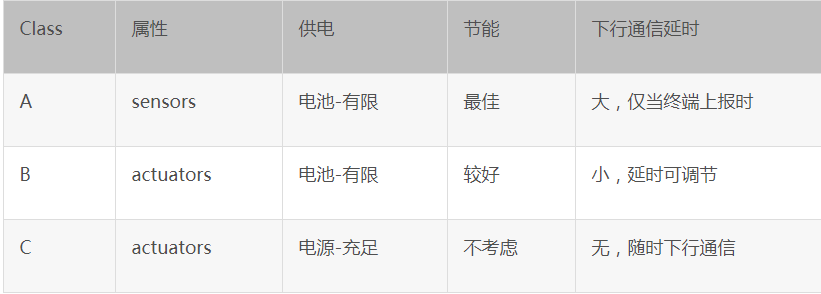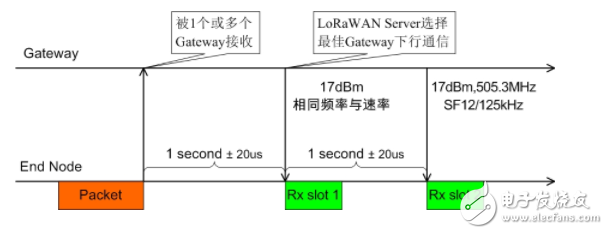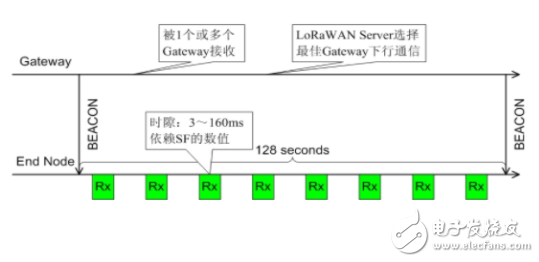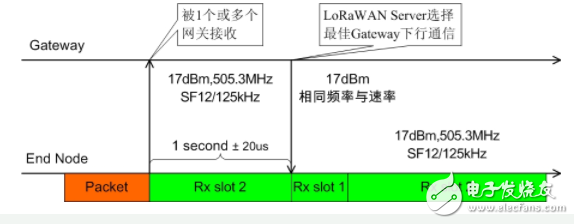This article provides an in-depth overview of the key components in LoRaWAN networks, including sensors, actuators, and end nodes. Sensors play a central role in data collection, while actuators are responsible for controlling or adjusting system parameters. In particular, actuators are often used to synchronize internal clocks, ensuring accurate timing across the network. These devices are typically designed for applications that require sufficient power to operate continuously.
LoRaWAN supports different types of end nodes, each tailored for specific use cases. The network classifies these nodes into three categories based on their power consumption, battery life, and wake-up delays. This classification allows users to select the most suitable type depending on their application requirements, making the system more efficient and adaptable.
1. Characteristics of the Three Types of End Nodes

2. Class A
Class A is the most widely used type in LoRaWAN due to its energy efficiency. When an End Node sends data, it enters two receive windows shortly after. The first window opens one second after the uplink transmission, allowing the Gateway to respond at the same frequency and data rate. If the End Node successfully receives the downlink message during this window, it will not open the second receive window. Otherwise, it will activate the second receive window at 505.3MHz with SF12/125kHz (as per Chinese regulations).
Due to its minimal active time, Class A offers excellent power savings. However, it only allows downstream communication after an upstream transmission, which may limit real-time interactions in certain scenarios.

3. Class B
Class B nodes enhance synchronization by receiving periodic beacons from the Gateway every 128 seconds. These beacons help the End Node maintain precise timing. Between beacons, the node opens scheduled receive windows, known as ping slots. If the Gateway's preamble is detected during a ping slot, the End Node can receive the full downlink packet.
The number of ping slots can be adjusted based on power availability and application needs, offering a balance between energy efficiency and timely communication.

4. Class C
Class C is designed for high-power applications such as smart outlets, remote-controlled switches, and other devices that require constant connectivity. Unlike Class A and B, Class C keeps its second receive window open at all times, allowing the server to send downlink messages whenever needed.
This continuous reception makes Class C ideal for applications requiring immediate control or feedback, though it consumes more power compared to other classes.

Patch cable,Fiber Optic Patch Cord,Fiber Optic Cable,Fiber Patch Cable,Multimode Fiber Patch Cord
Shenzhen Runtop Technology Co.LTD , https://www.runtoptech.com